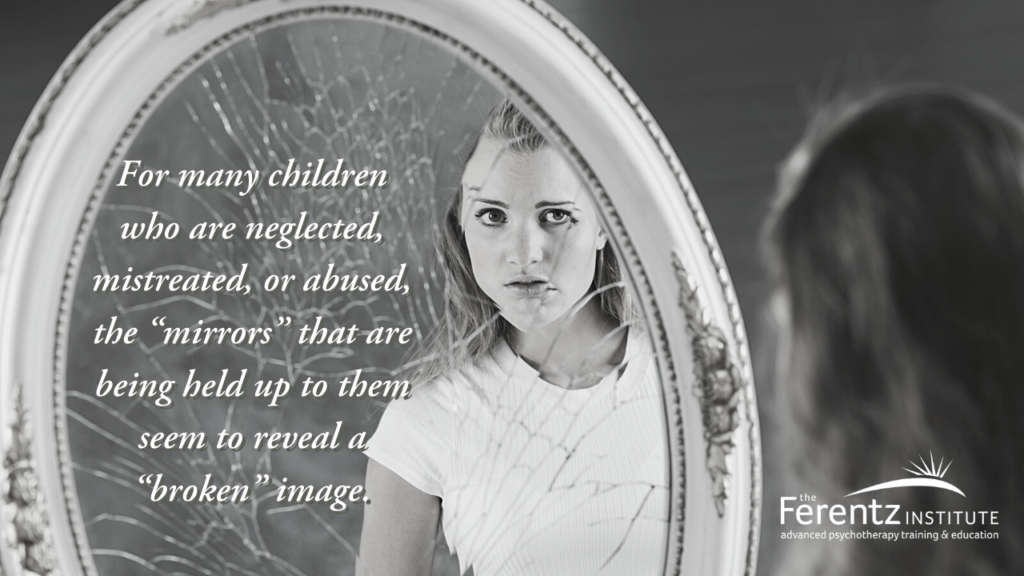
I’ve always believed that in childhood we see ourselves reflected through the faces and the eyes of our primary caretakers: in essence, they are our “mirrors.” The way they see us and how they treat us provides vital information about “who we are,” how we see ourselves, and how we can expect to be treated by others. Since each mirror is connected to a person we inherently love and trust, our assumption is that whatever is being reflected is accurate. It doesn’t occur to us to challenge or question the validity of this information. The repeated encounter of seeing ourselves reflected in a “trusted other” is one of the most formative experiences of our lives.
For many children who are neglected, mistreated, or abused, the “mirrors” that are being held up to them seem to reveal a “broken” image. Reflections of guilt, shame, self-blame, and worthlessness are all the inevitable byproducts of being ignored or harmed, and resonate with the caretaker’s disdain, rage, betrayal of trust, or abusive actions. What children do not and cannot comprehend is the fact that the caretaker is holding up a broken mirror — there is nothing damaged or broken about the child’s reflection. Before a client feels safe enough to question the possibility that their caretaker’s mirror was defective, it often takes the reparative experience of a sustained, unconditional, secure attachment with a caring clinician who can hold up a different, more compassionate and more accurate mirror. As this unfolds a client can come to the startling and freeing realization that there was never anything “wrong” with them.
Parents who have their own unmetabolized trauma, struggle with addiction, untreated mental illness, affect dysregulation, or feelings of inadequacy because they were not given any healthy modeling or resourcing, approach their own children with “broken mirrors.” Here are some common reasons why:
- They feel threatened by their child’s normal and appropriate physical and emotional needs, and rather than admitting their own limitations or struggles, blame or shame the child for having needs in the first place.
- They feel threatened by a child who has a very high Emotional IQ, sees deeper truths that transcend parental denial, or refuse to go along with dysfunctional family values.
- When they attempt to parent they actually see their own wounded younger self, and unconsciously project and superimpose their unresolved self-hatred and self-blame; holding up a mirror that really represents how they feel about themselves.
Whatever the case, when a broken mirror is all that is offered, it sets in motion the child’s core belief that they are the problem, not the parent or their unresolved issues. Although the ultimate goal of therapy is to teach a client how to experience internal validation by undoing cognitive distortions, letting go of self-blame, and restoring positive self-talk and self- compassion, they often need to first experience external validation by seeing themselves through the therapist’s more accurate and loving mirror. When clinicians can reflect back a client’s positive strengths and attributes and help them see their inherent worth and goodness, that reflection can be introjected and internalized. When a client can process the fact that their reflection was never damaged- they were just repeatedly shown their image through a broken mirror — it creates the possibility to reclaim an understanding and acceptance of their truer and more-than-good-enough self.

